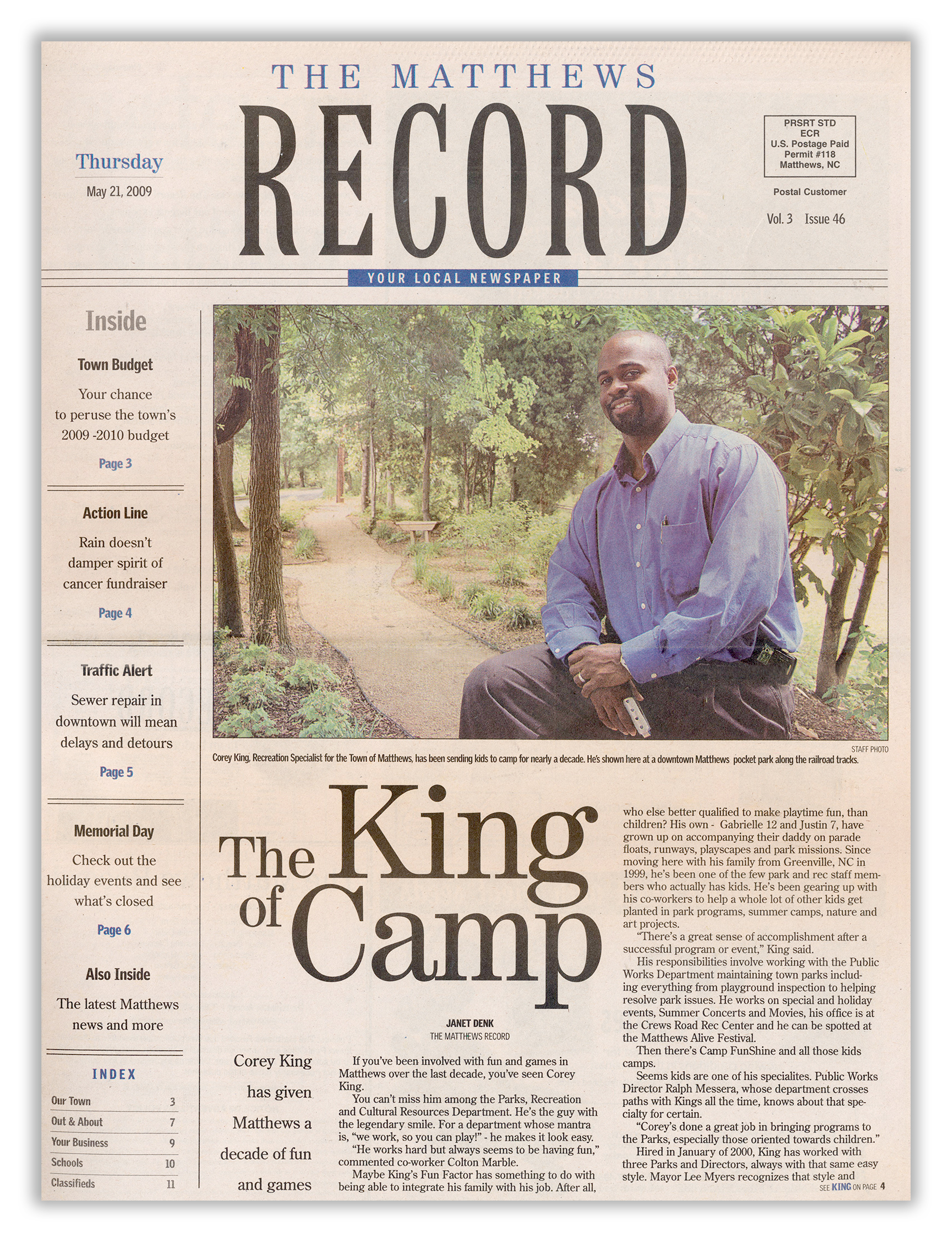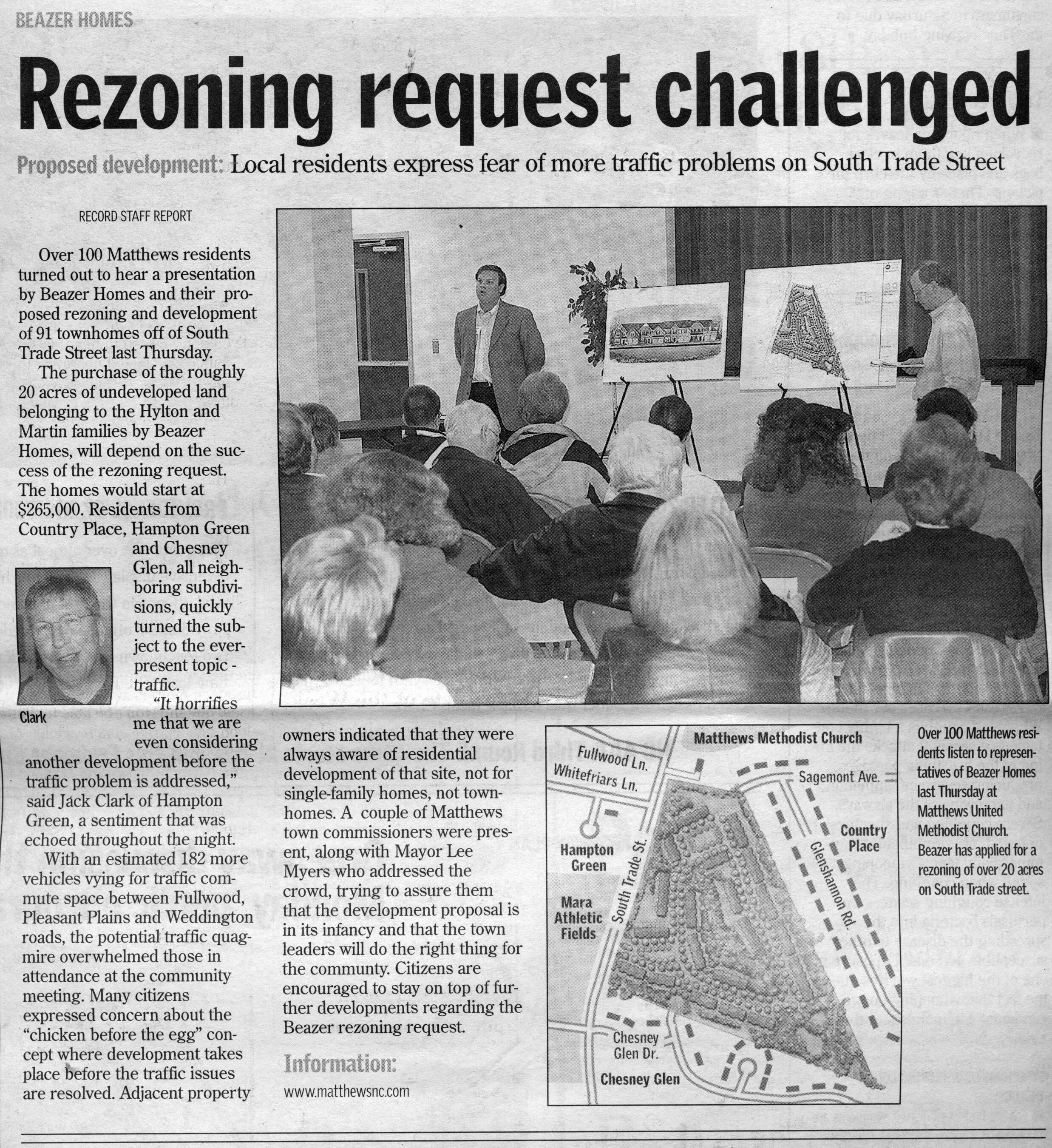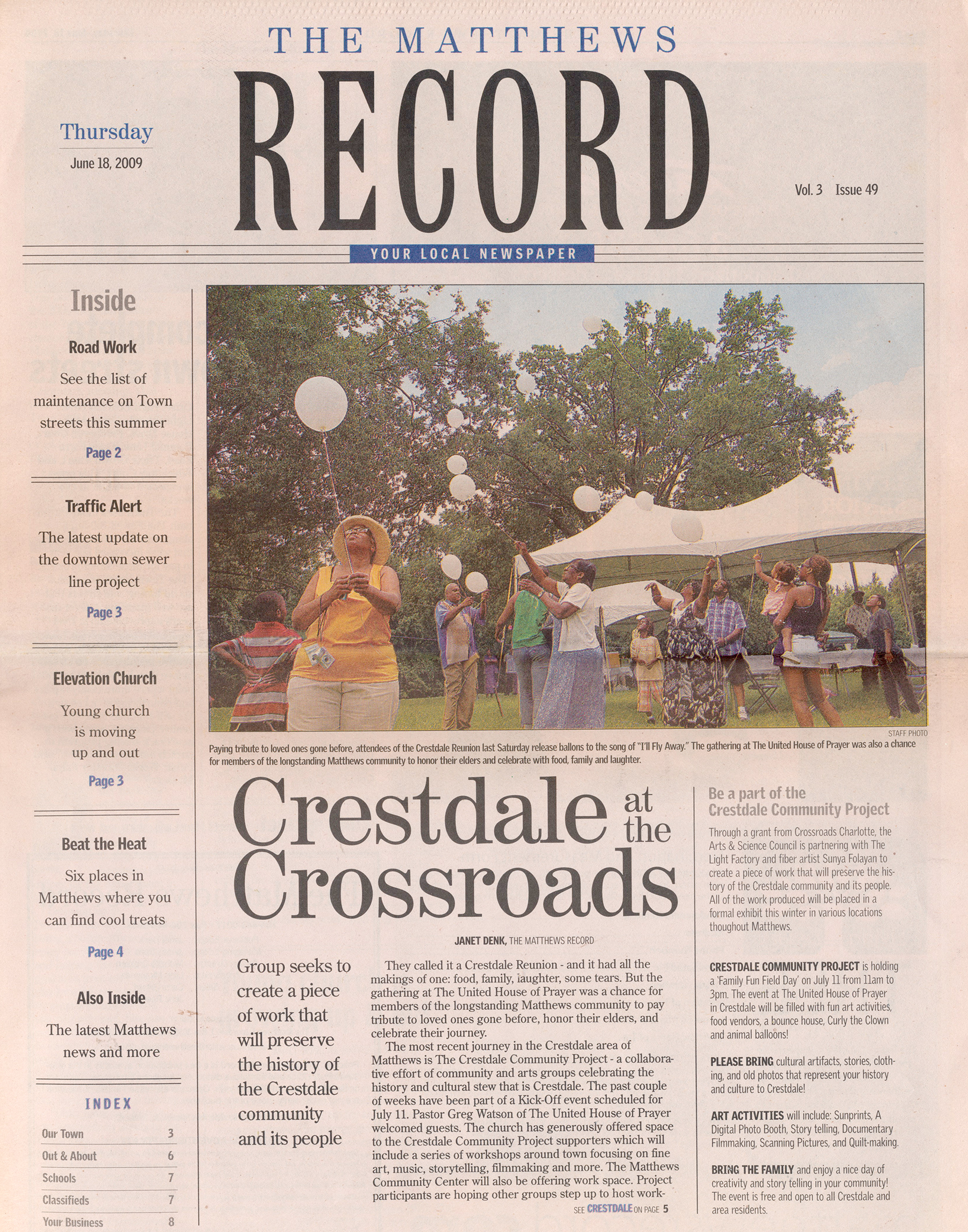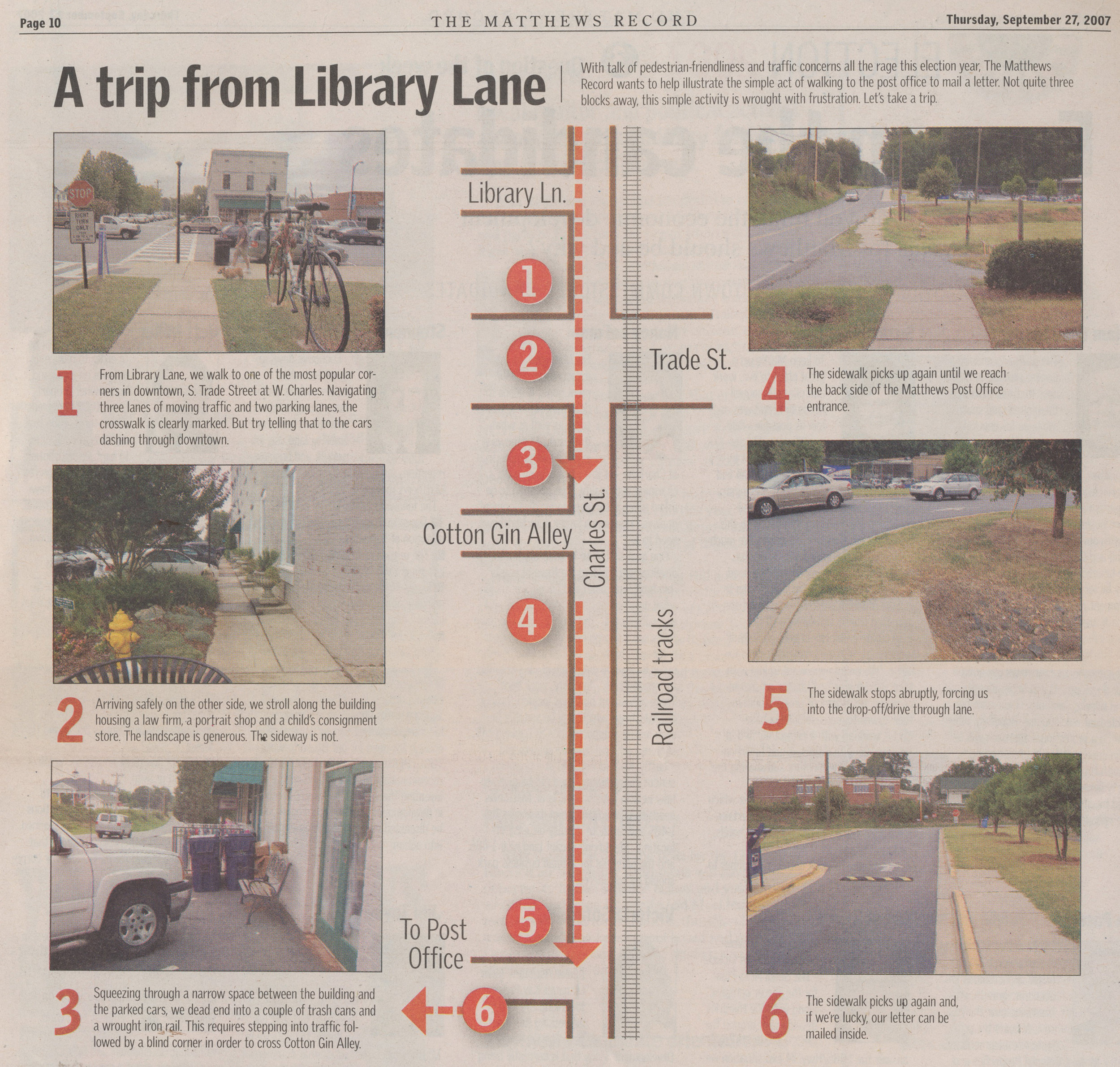With permission, The Beacon is archiving past issues of Matthews Record (also called Matthews News and Record and The Matthews News) articles online. Throwback Thursday articles will include relevant content still facing Matthews today. This story was originally published March 22, 2007 and was written by Janet Denk.
Click on image to view larger
Community that honors its trees, is a healthy one
The Benefits of Trees in the Community
Environmental Benefits
Reduction of pollution. Trees absorb carbon dioxide produced by automobiles, creating cleaner air. They reduce noise pollution on busy streets and create a barrier for private areas. Trees also reduce water runoff, stabilize soil and filter pollutants, reducing costs associated with storm water control and water treatment facilities.
Economic Benefits
When strategically placed, trees can decrease utility bills by up to 50 percent. Property values of homes with tress or homes located near city parks are reportedly 20 percent higher. In addition, studies show that businesses on tree-lined streets experience a 12 percent increase in sales versus those without trees.
Social Benefits
Trees and green spaces do more than provide shade or a place to play. Neighborhood parks and gardens encourage tighter-knit communities, which lowers local crime rates. Research shows that productivity at businesses with outdoor areas is higher while stress and aggression levels are lower. Children also benefit from being exposed to green. Students who have a view of trees and greenery are proven to perform better at school.
Arbor Day celebrations across the nation will have impacted the earth in many ways. Hundreds of volunteers will have planted more than 1,000 large trees and even more seedlings across the country.
Check out www.arborday.org to learn more.
Matthews celebrated Arbor Day last Friday at the Matthews Community Center. Rainy weather couldn’t dampen the spirits of those in attendance. “The event was the largest Arbor Day gathering ever in Matthews, with well over one hundred adults and children present,” Town Landscaper Pat Meehan said. Several awards were given to members of the community for their efforts in tree planting and promoting tree awareness in the community. A group of enthusiastic fourth graders from Christ Covenant School received special recognition for finding and nominating a state championship tree right here in Matthews - a sourwood tree located on their school grounds.
The South Windsor Homeowners Association were recognized for their group effort in creating a special place for trees in the community. Their teamwork and commitment have been lauded as the kind of volunteerism that mayor Lee Myers is seeking to make this community great. Almost a hundred kids, ages 2 through 12, listened to the speakers and participated in a number of educational activities that were arranged by the Parks and Recreation staff. Erin Reed of the Matthews Areas Secular Cooperative gave an important and heartfelt speech on her love affair with trees.
“It was a great event,” Meehan reiterated. “The celebration was all about the importance of trees in our community.”
He applauded the work of the town’s landscape division, who planted and maintained over 100 trees this season. “They did a great job,” he said of the staff, “and down the road, this town will be a much better - and greener community because of what they have accomplished.”
“We are grateful to all the volunteers dedicated to revitalizing urban forests. Their continued support helps us create inspiring and educational Arbor Day Celebrations. In addition, it amplifies our year round efforts to communicate the importance which trees have in controlling global warming, reducing pollution and noise levels, and contributing to improved lifestyles in many other ways.””
























